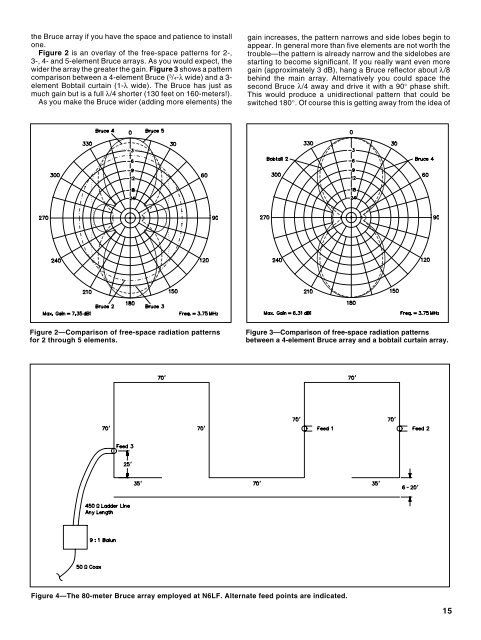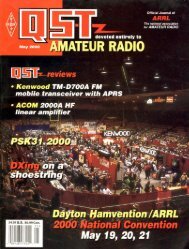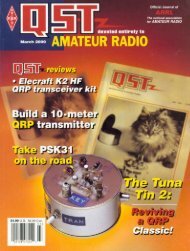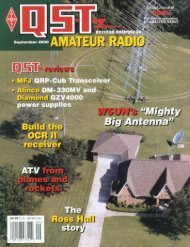September/October 2000 NCJ
September/October 2000 NCJ
September/October 2000 NCJ
Create successful ePaper yourself
Turn your PDF publications into a flip-book with our unique Google optimized e-Paper software.
the Bruce array if you have the space and patience to installone.Figure 2 is an overlay of the free-space patterns for 2-,3-, 4- and 5-element Bruce arrays. As you would expect, thewider the array the greater the gain. Figure 3 shows a patterncomparison between a 4-element Bruce ( 3 /4-λ wide) and a 3-element Bobtail curtain (1-λ wide). The Bruce has just asmuch gain but is a full λ/4 shorter (130 feet on 160-meters!).As you make the Bruce wider (adding more elements) thegain increases, the pattern narrows and side lobes begin toappear. In general more than five elements are not worth thetrouble—the pattern is already narrow and the sidelobes arestarting to become significant. If you really want even moregain (approximately 3 dB), hang a Bruce reflector about λ/8behind the main array. Alternatively you could space thesecond Bruce λ/4 away and drive it with a 90° phase shift.This would produce a unidirectional pattern that could beswitched 180°. Of course this is getting away from the idea ofFigure 2—Comparison of free-space radiation patternsfor 2 through 5 elements.Figure 3—Comparison of free-space radiation patternsbetween a 4-element Bruce array and a bobtail curtain array.Figure 4—The 80-meter Bruce array employed at N6LF. Alternate feed points are indicated.15
















